John Taylor (of Rule fame): Proper Fed Target Is +0.5%, not -5.0%
You gotta love it. Is everyone still really confident that Ben Bernanke will suck all those reserves out of the system in the nick of time? Is it at all troublesome that Fed officials are using the “Taylor rule” to come up with a target interest rate of -5.0%, while Taylor himself thinks the proper target should be +0.5%? I’m just a lowly Austrian economist who isn’t good with numbers like the rigorous mainstream guys, but it seems like the Fed officials were off by 1,100%, assuming Taylor is right.
It would sure stink if the Fed credibly promised massive future inflation, thinking a negative real rate of interest were necessary to heal the economy.
Stand-Up Economist Rips Macroeconomists
Now that I’ve gotten over my initial jealousy, this guy is pretty good. (HT2 Mark Thornton) If you get bored, fast forward to about 3:20 and listen to the hamster bit.
Benefits/Costs of Waxman-Markey
At MasterResource I summarize the latest goings-on in the climate wars. An excerpt:
[S]ome of the most credentialed and respected supporters of cap & trade…agree with the numbers: Waxman-Markey would cost households $3,100 in higher prices per year (possibly offset through truly productive government spending and/or tax relief), in exchange for a world which warms 9/100ths of a degree less by 2050 than it otherwise would.
To be clear, that figure of 9/100ths of a degree assumes the rest of the world continues with “business as usual,” while the US obeys the (eventually harsh) emissions reductions in Waxman-Markey. (You will not be surprised to learn that the really harsh limits kick in down the road, not when the thing is first signed into law.)
Chip Knappenberger, MasterResource’s climate scientist, has also run the numbers assuming other countries participate in comparable emissions cuts. Here is his post on this scenario, but I haven’t followed this debate closely so I don’t know if the critics at RealClimate agree to his numbers here. Of course, Chip finds that if other industrialized countries participate, then we get better results (i.e. more avoided warming), but even so it’s not great:
If the U.S., Canada, Australia, Japan, Europe, and former Soviet countries all limited their emissions of greenhouse gases according to the schedule laid out under Waxman-Markey—a monumental, unexpected development—it would, at most, avoid only a bit more than one-half of a °C of projected global warming (out of 4.5°C—or only about 10%). And this is under worst-case emissions assumptions; middle-of-the-road scenarios and less sensitive climate models produce even less overall impact.
I stand open to correction, but I think the big thing here is that unless you get China on board, at best you are merely postponing (what some consider to be) dangerous warming by a few years.
I think it is incredibly wishful thinking to assume that the leaders of China would seriously hamper their economic growth because of the warnings of climate scientists. It’s not as if the world will literally end anytime soon; in the worst case scenarios millions of people around the world might get flooded out of their homes, etc.
So if world leaders (such as the Chinese) continue to build nuclear weapons in order to keep the US at bay–even though this collectively runs the risk of the true destruction of civilization as we know it–are they really going to hesitate to achieve higher economic growth because it might kill some poor people on the coasts?
I realize I will be accused of not caring for these people. That’s not my point here. My point is, the rulers of China do not care for these people, at least not enough to cripple how quickly their economy catches up to the Americans’. And I’m not saying the Chinese leaders are particularly vicious in this respect; I’m singling them out because they are the crucial ones who need to limit emissions if these plans are to have any success.
Sooo, if you really do think that (say) 5 degrees C of warming could threaten millions of people, I think it’s very foolish to pin your hopes on a plan that requires all major governments around the world to lower their own economies’ economic growth for many decades. Does that sound like a realistic plan?
Garrison Rejoinder to DeLong
Here Roger Garrison responds to DeLong’s critique of Garrison’s Freeman article. I think Garrison makes some good points, and he certainly provides the larger context within which to contrast the Austrian versus Keynesian approach to business cycles. However, I don’t know if Garrison made the right move here:
DeLong writes that “Garrison and the other Austrians have a very basic problem with their math.” But with his own math, DeLong demonstrates only that the housing bubble was not Mt. Vesuvius. Implicitly, though, he is suggesting that something else was—that there must be some other candidate cause whose magnitude matches the severity of the recession.
My article did not contain any problematic math; it contained no math at all—because the Austrians recognize that the relationship between cause and effect is not a quantitative relationship. Both Mt. Vesuvius and the smoker’s carelessness count as causes. So, too, do the cheap credit and consequent temporal discoordination that preceded the downturn.
So yes, it’s funny that DeLong is accusing Garrison of botching his math, when (as Garrison notes) he didn’t use any math at all. Garrison is responding that a smoker can start a forest fire, and it would be silly for an investigator to say, “That can’t be the explanation; look at how much damage the fire did! Someone must have planted a lot of dynamite.”
But I think this concedes the basic soundness of DeLong’s calculation, where he takes the $2 trillion in real estate losses and then wonders how that could translate into $x trillion (I forget what his number is) in worldwide losses in the financial system.
Is it too simplistic for me to say, “Leverage”? I grant that as an Austrian talking about physical distortions in the capital structure, I would have to translate what that would mean in the Austrian account. But isn’t that what the answer to DeLong is, in one word?
Geithner Blames Central Bankers, But Greenspan Only Teeny Weeny Bit
John Cochrane sends this WSJ article relaying portions of a Charlie Rose interview with Treasury Secretary Timothy Geithner (who was head of the NY Fed from late 2003 – January 2009) talking about the causes of the worldwide financial crisis:
The revelation [of central bank responsibility] came from Timothy Geithner last Wednesday with PBS’s Charlie Rose, who asked the Treasury Secretary: “Looking back, what are the mistakes and what should you have done more of? Where were your instincts right, but you didn’t go far enough?”
Mr. Geithner: “We need a little more time to get full perspective.”
Mr. Rose: “Right.”
Mr. Geithner: “But I would say there were three types of broad errors of policy and policy both here and around the world. One was that monetary policy around the world was too loose too long. And that created this just huge boom in asset prices, money chasing risk. People trying to get a higher return. That was just overwhelmingly powerful.”
Mr. Rose: “It was too easy.”
Mr. Geithner: “It was too easy, yes. In some ways less so here in the United States, but it was true globally. Real interest rates were very low for a long period of time.”
Mr. Rose: “Now, that’s an observation. The mistake was that monetary policy was not by the Fed, was not . . .”
Mr. Geithner: “Globally is what matters.”
Mr. Rose: “By central bankers around the world.”
Mr. Geithner: “Remember as the Fed started — the Fed started tightening earlier, but our long rates in the United States started to come down — even were coming down even as the Fed was tightening over that period of time, and partly because monetary policy around the world was too loose, and that kind of overwhelmed the efforts of the Fed to initially tighten. Now, but you know, we all bear a responsibility for that. I’m not trying to put it on the world.“
Seriously, can we please get some cool overlords for once, some guys with a little panache? Darth Vader didn’t go around saying, “You’d better tell me where the rebel base is, or else I won’t be able to prevent a giant laser from blowing up your home planet.” Or how about when bank robbers lock-down the scene and say, “Who’s in charge here?” and then shoot the first guy who says he is? (The correct answer is, “You’re in charge. You have the gun.”)
But no, we’ve got Greenspan and now Geithner whining and saying, “Don’t look at us! All we could control was the supply of US dollars. Why would you think that had anything to do with the global economy?”
Besides the surface absurdity of their view, let’s dig a little deeper. In his WSJ “Don’t Look at Me!” op ed, Greenspan said he tried raising short rates to stem the housing boom, but those pesky long-term mortgage rates didn’t rise in response to his prudent decision. As I pointed out, that’s because the long rates didn’t fall off a cliff when Greenspan yanked short rates way down a few years earlier. (So it’s not surprising that long rates didn’t move up when Greenspan slowly pulled short rates back up.) Here’s the chart:

So to repeat, Greenspan’s defense was that he tried raising the federal funds rate from June 2004 onward, and yet mortgage rates stubbornly refused to rise. When you see the broad history of the two series in the chart above, you can see why. (And the answer is NOT, “Those pesky Asians decided to counteract Greenspan’s caution.”)
Now back to Geithner: What the heck is he talking about? Mortgage rates didn’t fall once Greenspan began jacking the fed funds rate back up. The chart above makes it crystal clear that they were slightly higher after the Fed had brought the fed funds rate back up to 5.25%.
Does Geithner have in mind some other long term rate? Let’s try 10-year Treasurys, and contrast them with the overnight fed funds rate. (Remember the Fed directly targets the federal funds rate. If you need a primer, check out this article.)

Well you tell me, folks. In the chart above, when the Fed started pulling up the red line, does the blue line mysteriously fall? Well, you could maybe argue that that’s true for about a 4-month period right after Greenspan started raising the fed funds rate (in June 2004). (UPDATE below.) But in the broader picture, the blue line bounces around a lot; it moved up and down even when the fed funds rate was flat from June 2003 – June 2004. Clearly over the whole period of Fed tightening (from June 2004 – June 2006), the 10-year Treasury yield rose.
So the same thing holds for the fed funds/10-year Treasury spread as holds for the fed funds/30-year mortgage rate spread: The long-run historical correlation of these two series breaks down when Greenspan yanks the fed funds rate absurdly low, and then things return to normal once he allows the short rate to rise back up:

Someone please convince me that our current Treasury Secretary was referring to that 4-month period when the fed funds rate rose and the 10-year rate fell. I would hate to think that someone in charge of the IRS would actually lie about the causes of a global financial meltdown. If you can’t trust the Treasury Secretary, whom can you trust?
UPDATE: OK in fairness to Geithner, you could clock the 10-year yield in June 2004, and then say that it did not exceed that level again until about 18 months later, despite the Fed raising short rates throughout the period. So maybe that’s what he meant. But still, if you pull back and look at a longer history, you’ll see that the break in correlation between the two occurred earlier, when Greenspan slashed rates, not when he later allowed them to rise.
Inflation Update
I have been watching certain figures fairly closely, inasmuch as I have been telling everybody to hedge himself (that sounds funny but it’s grammatical?) against possibly huge price increases that will manifest themselves by the end of 2009. Since I hate it when gurus make bold statements that technically aren’t falsifiable, in a recent post I said:
If the non-seasonally adjusted CPI rises at less than a 5% annualized rate in 4q 2009, I will admit I have been a fool for my warnings, and that I clearly don’t know what I am talking about. I am going to be extremely surprised if all of the money printing and unbelievable deficit spending don’t start pushing up US prices this year.
The one thing that worries me is that the markets don’t seem to agree; here’s Scott Sumner beating that horse.
Yet here’s something interesting: I’m almost already right! The first quarter annualized growth in the (non-seasonally adjusted) CPI was 4.8%! You got that, folks? Everyone and his brother is warning us about the risks of deflation, and yet we had a (nsa) CPI increase during the first quarter that is more than double the Fed’s ostensible “comfort zone.”
Here (.txt) are the official figures: Dec 2008 CPI was 210.2, March 2009 CPI was 212.7. That’s a 1.19% increase over three months, which means an annualized growth rate of 4.8%. So for my 5% figure in 4q 2009 to come true, I just need a sliver more price inflation in that quarter than what we just had. Check out the M1 figure (in levels) below. I’m feeling saucy. (You can also send the below to people who say, “Don’t freak out about the monetary base increase; that money isn’t getting out into the public.” Oh but it is.)

Unscientific Commentary at NPR
Uh oh! I was listening to an NPR story on the plight of the polar bears (because of global warming), and the reporter explained that the shrinking ice spelled disaster. Some scientists had proposed a refuge area for the bears, while waiting for the climate to cool back down after the appropriate policies had been put in place.
The reporter ended by saying something like, “Although it may be the only option at this point, this would be a terrible fate for the polar bears, who were meant to live on the open sea.”
This shocked me. Hasn’t she taken high school biology? Everyone knows there is no purpose to evolution. Why oh why can’t we have a better press?
Name Dropping
I met some interesting people on my recent travels:
* I went to dinner with Kevin Duffy, an Austrian (in the economic sense) hedge fund manager who had quite a good 2008. The industrious von Pepe has located an April 2007 interview with Duffy.
* During my lunch talk in the Q&A someone challenged my recommendation to stock up on gold. The guy said something to the effect that if we’re in a scenario where owning the S&P 500 is useless, then having gold won’t matter either. I said something flip like, “Well if we’re in a Mad Max environment, that will obviously be awful, but even so I’d rather have a few pounds of gold than not.” Later, when signing books, a different guy said, “You mentioned Mad Max. Well this book you just signed is a gift for Mel’s father.” (If you are going to put jokes in the comments, they’d better be really clever.)
* But the big event was meeting the infamous Robert Wenzel across the street from the Treasury. (This occurred during my DC leg of the whirlwind week, of course.) I finally put to rest my suspicion that RW was a 15-year-old blogging from his mom’s basement. Unless that kid was out in a van, feeding lines to a guy he hired for the night…
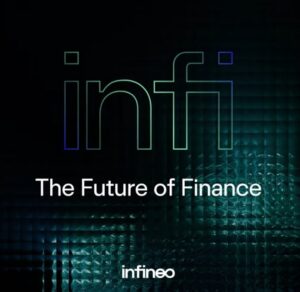
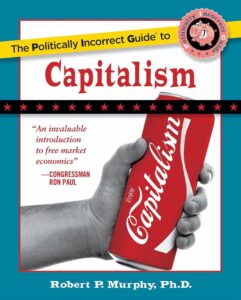
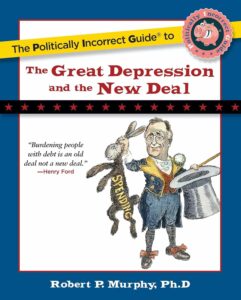
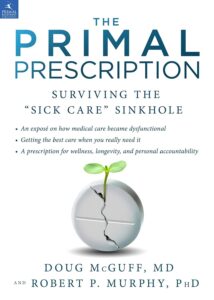


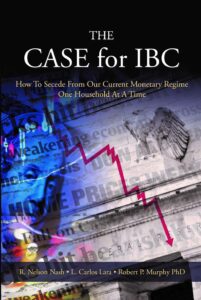
Recent Comments